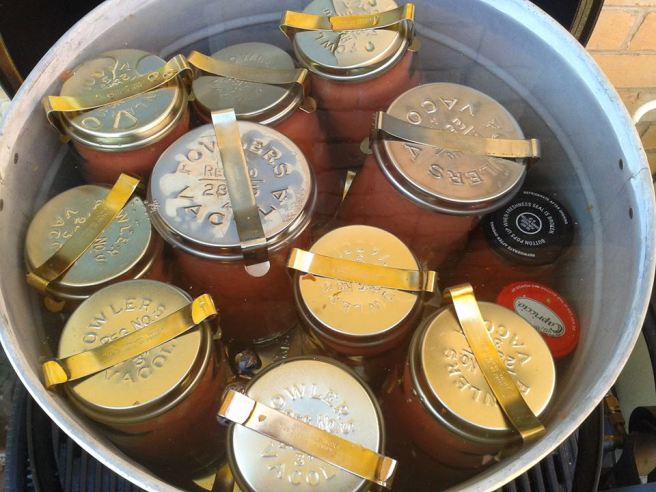This year had a very long winter and my tomatoes have been very slow going. I really hope the tomato season gets going soon. In previous years the tomatoes have been pumping at this time of year starting at the beginning of December and finishing up around March.

Previously, I grew these cherry tomatoes on a simple tent like bamboo structure which worked well. The only downside was the ones growing on the inside needed specialist picking, luckily I had the perfect person with keen eyes to find them. The six plants were very prolific and supplied us with plenty of tomatoes.

Later in the season at the end of March I bought two big boxes of South Australian sauce tomatoes from the local fruit shop to make into tomato passata. There are lots of ways to make it and everyone who does make it seems to have their own special way to do it. A few of the ways to do it ask for the skin and seeds to be removed. I much prefer the idea of using all the fruit so that’s what I did. Also, I read that there is a spike in hospital admissions of people that have had sauce bottles explode in their face and burn them so I took that into account when experimenting with my first rather small batch of 20 kilos. I tried a couple of ways to do it and settled on a recipe I was happy with.
Twenty kilos sounds like a lot but it was so good we used the passata in everything. The flavour really was pretty amazing and I can see now why people devote a whole weekend to preserving this beautiful fruit. To work out how much our family uses in a year I have been saving all our passata jars to get an idea of exactly how much of this we actually eat. I will recycle these jars and use them to preserve the following years supply.
Passata recipe

1 kg of tomatoes will make around 750 ml passata
Wash the tomatoes well and cut of any bad bits. Slice tomatoes in big chunks eg – four to six pieces, and place in big pot. Put pot on stove on medium heat. The juices should start being released from the tomatoes. Once they have released enough tomato juice get a stick blender and puree. Simmer the tomato puree until fragrant, 15 – 20 mins or so. Put puree into pre-washed and sterilised jars and seal lids. I used a combo of fowlers jars and supermarket passata bottles, you can also use beer bottles.
Get a preserving unit. I used an old one I picked up off Gumtree that has a built in thermometer. Our next door neighbour uses a large drum over a fire. Use whatever you have. Put a towel at the bottom of the unit and then start stacking the bottles in with tea towels, cloth, rags, newspaper (whatever you have on hand) to separate the bottles so they don’t break when the water is boiling. Fill the drum with cold water and slowly bring to the boil. I heated up my unit on the BBQ. Using the BBQ kept the kitchen cool and meant that I didn’t have to move it when hot to use my stove. Make sure the water boils for at least 30 mins and then turn the heat off.
Don’t try to remove the bottles at this stage as you might end up in hospital. Leave the bottles in the unit overnight and remove when cold the next morning. Store bottles somewhere dark until ready to eat. Enjoy.
